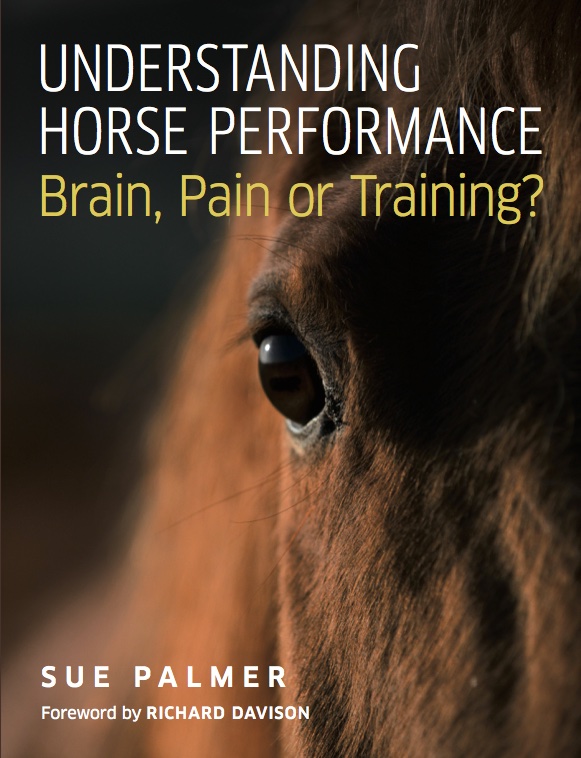You can listen to this short clip here, and find The Horse Physio on Facebook, YouTube, and Instagram. Please like and subscribe on the channels you enjoy most, and also take a minute to sign up to my newsletter.
What to do:
1. Knee flexion: Pick the foot up as though you are going to pick out your horse’s front foot. With one arm on the inside of your horse’s leg, and the other on the outside, support using both hands in front of his fetlock on and just above the joint. Squeeze his fetlock towards his elbow, causing the knee to bend fully. Repeat with the other front leg.
2. Bringing the front leg forward: Pick your horse’s front foot up as though you are going to pick out his foot. Placing both hands behind and underneath his fetlock, move your body to bring his leg through underneath him and stretch it forwards in front of him (as you might if you were stretching his leg forwards after girthing him up). Repeat with the other front leg.
3. Bringing the hind leg forward: Pick up a hind foot as though you were going to pick out your horse’s foot. Move your body to bring his leg through underneath him and stretch his hind foot forwards towards the knee of the foreleg on the same side. Repeat with the other hind leg.
The ideal: A horse who is able to fully bend both knees without flinching, relax with each of his front legs stretched out in front of him, and relax with each of his hind legs stretched forwards. Most of all, left should equal right and vice versa.
Check: Does your horse move the left leg as far as the right leg, or vice versa? Does he relax at the end of the movement, or does he snatch his leg back or forward away from you? Does he overbalance? Is he more resistant to doing the exercise with one leg than with the other? Does one leg feel more ‘stuck’ than the other? In the knee flexion exercise, his fetlock should lie snugly against his elbow – does it do this, or is his movement restricted in one or both knees? Does he flinch when you squeeze the last little bit of knee flexion? Does he have as much bend in the left knee as in the right, and vice versa?
If you’re an instructor with a client who’s struggling to achieve what you’re asking of them, you can suggest these exercises and help them to find the right treatment for their horse. They’ll get more from their lessons with you on a horse who’s physically better able to cope, and your obvious care for the horse’s wellbeing will help to build greater trust and respect. If you’re a professional rider and one of the horses you are riding is finding something overly difficult, or not performing as well as you would expect him to, these exercises could help his owner see that his performance might improve further with extra help from a vet or physical therapist. This would allow you to improve your scores, or work or compete him at a higher level, and owners will appreciate your breadth of feel and understanding for the benefit of their horse.
As a saddler, dentist, farrier, or other equine paraprofessional, you can point owners in the direction of this book and these exercises to help them recognise when their horse needs help from another professional as well as yourself. This will make your job easier since you’re not trying to multitask and cover work that others could do more easily, and it further improves the service you are offering to both client and horse. Increasingly clients are (quite rightly) expecting service over and above ‘the norm’, and with so much information freely available on the web, they expect every equine professional to be the fount of all knowledge. Since none of us can possibly know everything (and if someone claims that they do, perhaps they are not the right person to be working with), one priority is to point people in the direction of the right help. The trick is to know when and how to do that, and where to point them. I sincerely hope this book will help, for the sake of ridden horses throughout the world.
“A horse doesn’t care how much you know, until he knows how much you care.” Pat Parelli
Find out more and get your copy of ‘Understanding Horse Performance: Brain, Pain or Training?’ today from www.thehorsephysio.co.uk.
Keep an eye out for my next book, “Harmonious Horsemanship: How to use the Ridden Horse Ethogram to Optimise Potential, Partnership, and Performance”. This ground-breaking book is co-authored with Dr Sue Dyson, and will be available summer 2023. Sign up at www.harmonioushorsemanship.co.uk to be kept up to date with new information as it comes available.
Watch a FREE 30-minute documentary on the Ridden Horse Ethogram here.
Here’s a FREE 30-minute presentation by Sue Palmer on how to be confident that your horse is comfortable.
Other books by Sue Palmer M.Sc. MCSP:
‘Horse Massage for Horse Owners’
‘Understanding Horse Performance: Brain, Pain or Training?’
© Sue Palmer, The Horse Physio, 2022
